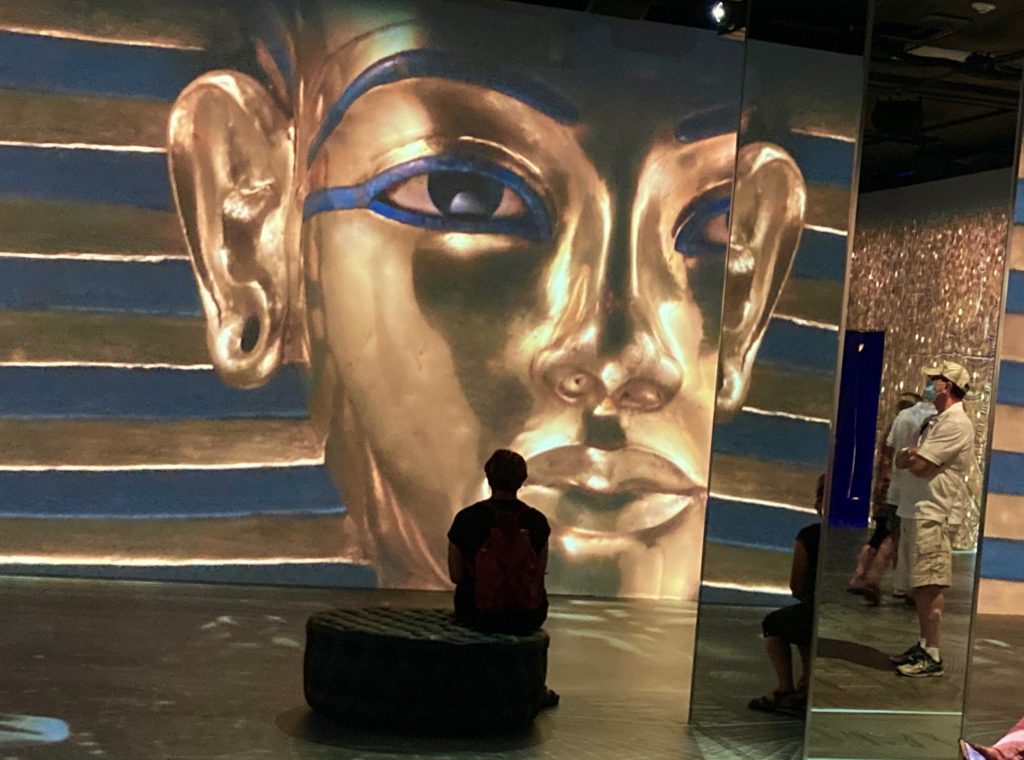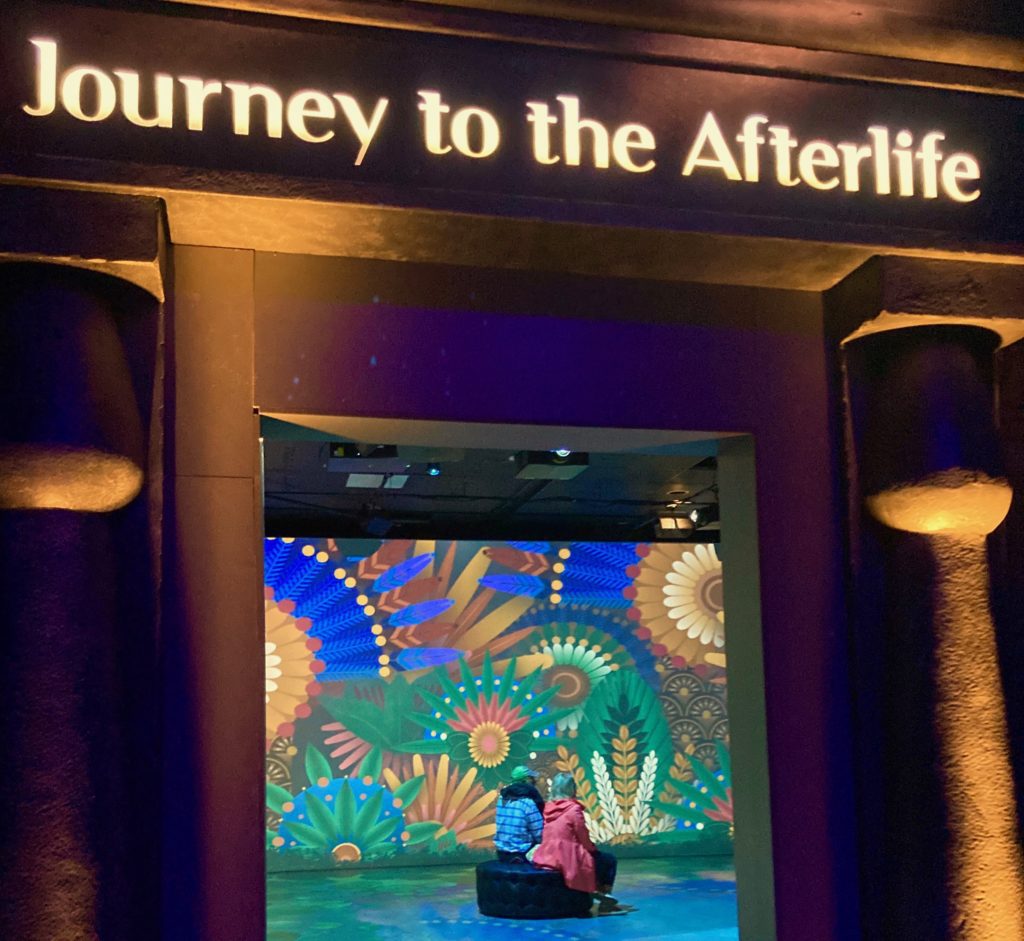‘Beyond King Tut’ at National Geographic
By • October 12, 2022 2 4400

The world’s largest archaeological museum is due to open next month a mile from the Egyptian Pyramids — possibly on Nov. 4, the day in 1922 that a 12-year-old water carrier uncovered a carved step leading to the tomb of Tutankhamun (in one version of the story).
Or perhaps the museum will open on Nov. 26, 100 years from the day British archaeologist Howard Carter poked a candle in, reporting to Lord Carnarvon, his anxious patron: “It is wonderful!”
That it was. Nearly intact, the tomb contained 5,398 objects: six chariots, 29 chairs (including three thrones), bows, arrows, shields, armor, tunics, loincloths, nearly 100 sandals, more than 100 canes, boxes for grain and fruit and jars for wine and beer.
Among the art and jewelry — some stolen in antiquity — was an object that became Mona Lisa famous: the 22-pound funerary mask of the last 18th Dynasty pharaoh.
Depicting his face with braided beard (accidentally knocked off in 2014, then reattached), framed by a vulture-and-cobra-topped headdress with stripes of gold and blue glass, the glowing mask transfixes visitors to the National Geographic Museum’s current exhibition. But neither it nor any of the other artifacts — soon going on view at the Grand Egyptian Museum — are in Washington, D.C.
“Beyond King Tut: The Immersive Experience” conjures the boy king’s astounding tale out of thin air.

Photo by Richard Selden.
Each handful of visitors begins with a short video about Tutankhamen, who assumed the throne at age 8 or 9 around 1332 B.C.E. “Ten years later, the boy king is dead” — from malaria or an infected broken leg. He is known to have had a cleft palate, a curved spine and a clubbed foot (explains the canes).
Tutankhamun means “living image of Amun,” king of the gods. During his reign, his father Akhenaten’s revolutionary move toward monotheism was reversed and Thebes (now Luxor) restored as Egypt’s capital. Archaeologists offer commentary in the video, but there is already a sense of “movie magic” in the Indiana Jones-like soundtrack and a motes motif that later reappears as dust, sand, ashes and flecks of gold.
As if following along tomb passageways, visitors then make their way through explanatory galleries, reading text and viewing images through rough openings in faux stone walls.
Next: the burial chamber, with a structure mimicking the sarcophagus. Here, a sound-and-light show plays as visitors face a mural of 12 baboons, representing the 12 hours of night, and other painted scenes.
After the burial chamber comes a wide corridor with suspended replicas of small boats, a chair, a chariot and so on. Text and images cover topics such as Tutankhamun’s family tree and the board game Senet. The corridor leads to a wall-size image of the front of the funerary mask and, behind it, of the less-familiar back. Beyond are galleries titled Between the Linens, Verses for Immortality and… Journey to the Afterlife.

Photo by Richard Selden.
In this large space, visitors are enveloped by an “artistic interpretation of the journey through the Netherworld” lasting about half an hour. For those who wish to sit, ottomans are provided (the floor, bombarded with moving patterns, is also available). Psychedelic, kaleidoscopic, Kusama-esque — this is the immersive climax. Some quotes: “You will not be alone!” “Sail on in your barge, Tut!” “Will your voice be more righteous than that of your adversaries?”
This trippy episode ends with “The new day, at last” — a landscape bringing to mind the animated Beatles film “Yellow Submarine.” Visitors then get a final dose of rationality: highlights of what science, in the form of scans and DNA analysis, has revealed about this short-lived ruler of more than three millennia ago, the pharaoh known to all as King Tut.
“Beyond King Tut”
Open daily, 10 a.m. to 6 p.m.
Through Feb. 6, 2023
National Geographic Museum
1145 17th St. NW
natgeomuseum.org
202-857-7700


Work very well done
Touche. Solid arguments. Keep up the great work.